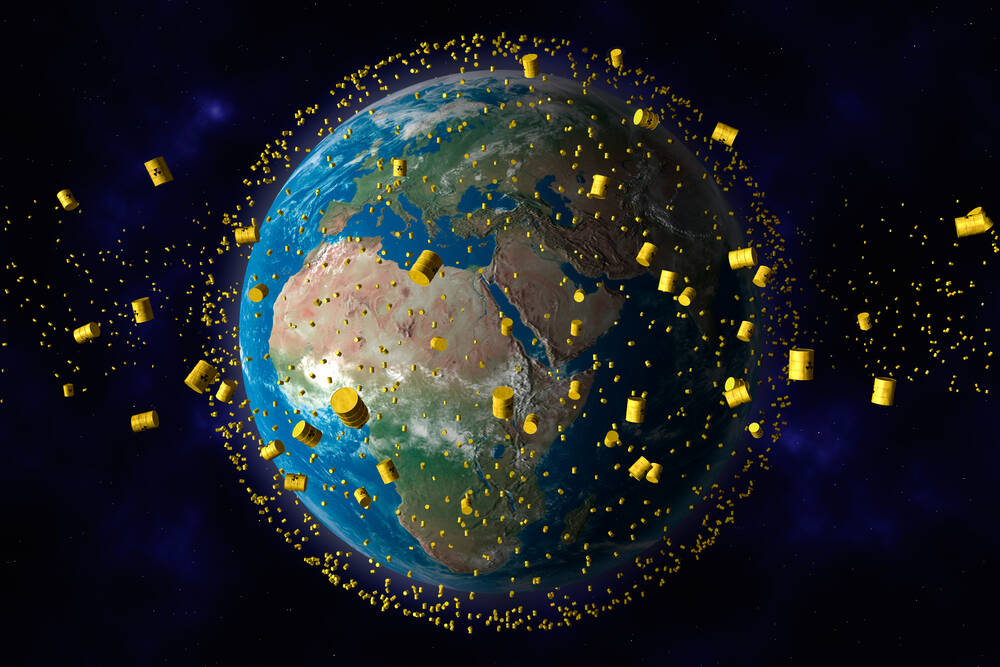Europe Eyes Skies With Aim To Track Space Junk And Boost Orbital Operations

A lack of situational awareness capabilities is holding back Europe's ambitions in space, according to the chair of the EU Space Surveillance and Tracking Partnership (EU SST) - a group that is laboring to up the accuracy and quality of space tracking, particularly of orbiting debris.
Dr Pascal Faucher this week gave an address at the Software Defined Space Conference in Tallinn, Estonia, on the priorities of the EU SST Partnership, which was established in 2021 as a part of the EU Space Programme.
According to the organization, the space around Earth is becoming increasingly congested as both nation states and private companies continue to launch orbital satellites and other spacecraft. The result is a growing need to ensure the safety of space operations in the long run, it says.
"One of EU SST's strategic priorities is to enhance the level of European strategic autonomy in the space situational awareness (SSA) domain, in all orbit regimes," Dr Faucher said.
This will rely in the first instance on military and civil sensors, but increasingly on commercial sensors, which can contribute to autonomy, he claimed. "Our objective is to reach an ideal balance of approximately 50-50 percent between military and commercial data used in EU SST."
Another concern for EU SST is boosting the competitiveness of the European space industry and startups. The organization will act as a "public anchor" customer for European commercial SSA data and as a public investor in the development of commercial sensors to track orbital objects.
To this end, the EU SST published a call for commercial data provision with a budget of €18 million ($19 million) last month, while a call for the development of commercial sensors supported by a budget of €30 million and a call for new SSA-related R&D projects with a budget of €22 million are set to be published soon.
"At the moment, the amount of public funding available to the SSA sector is simply not sufficient to reach the ambitioned level of strategic autonomy in Europe," Dr Faucher said.
EU SST will therefore aim to "exploit synergies" between civilian and defense resources, he added. "We need to coordinate resources between civil and military actors to enhance both national and commercial capabilities, thereby strengthening European strategic autonomy and enabling Europe to make a valuable contribution to raising levels of space safety, security and sustainability of space activities."
Civilian and military users have different requirements when it comes to SSA data, said Dr Faucher. Military customers tend to need a lot of data, at high frequency, on a small number of objects of interest, while civil customers need less data, mostly on space debris.
- ESA funds space weather satellite swarm to understand and combat orbital debris
- DISH must pay for bungled orbit change in landmark space debris penalty
- FAA wants rocket jockeys to clean up after their space launch parties
- Space junk targeted for cleanup mission was hit by different space junk, making more space junk
"This segmentation of the market, which is already beginning to materialize to some extent, will create more opportunities for commercial SSA companies," he claimed.
According to the EU SST, its capabilities comprise three main functions: Sensor, Processing, and Service Provision.
The Sensor function is made up of a network of sensors to survey and track space objects in all orbital regimes (low Earth orbit, geostationary orbit, etc). This network currently comprises 40 sensors operated by various member states, including radar, telescopes, and laser range finding.
The Processing function aims to process thousands of daily measurements from the sensors and coordinate data sharing between the different operations centers using a common database.
The Service Provision function is in charge of providing three SST services to users through a secure portal: Collision Avoidance (CA), Re-entry Analysis (RE), and Fragmentation Analysis (FG). More than 190 organizations are receiving these services and more than 400 satellites are currently safeguarded from the risk of collision, the organization said.
The European Space Agency will also use the conference to outline its Space Safety Programme (S2P) proposals to boost awareness of threats from space to vital infrastructure and how to protect them. As part of this, the agency is adopting a "zero debris" approach, with the objective that missions entering the design phase after 2030 will not leave behind any significant objects in orbit.
Other regulatory bodies are following a similar path. In the US, the Federal Aviation Administration (FAA) has proposed rules requiring commercial space operators to take responsibility for preventing or disposing of debris resulting from launches. ®
From Chip War To Cloud War: The Next Frontier In Global Tech Competition
The global chip war, characterized by intense competition among nations and corporations for supremacy in semiconductor ... Read more
The High Stakes Of Tech Regulation: Security Risks And Market Dynamics
The influence of tech giants in the global economy continues to grow, raising crucial questions about how to balance sec... Read more
The Tyranny Of Instagram Interiors: Why It's Time To Break Free From Algorithm-Driven Aesthetics
Instagram has become a dominant force in shaping interior design trends, offering a seemingly endless stream of inspirat... Read more
The Data Crunch In AI: Strategies For Sustainability
Exploring solutions to the imminent exhaustion of internet data for AI training.As the artificial intelligence (AI) indu... Read more
Google Abandons Four-Year Effort To Remove Cookies From Chrome Browser
After four years of dedicated effort, Google has decided to abandon its plan to remove third-party cookies from its Chro... Read more
LinkedIn Embraces AI And Gamification To Drive User Engagement And Revenue
In an effort to tackle slowing revenue growth and enhance user engagement, LinkedIn is turning to artificial intelligenc... Read more

